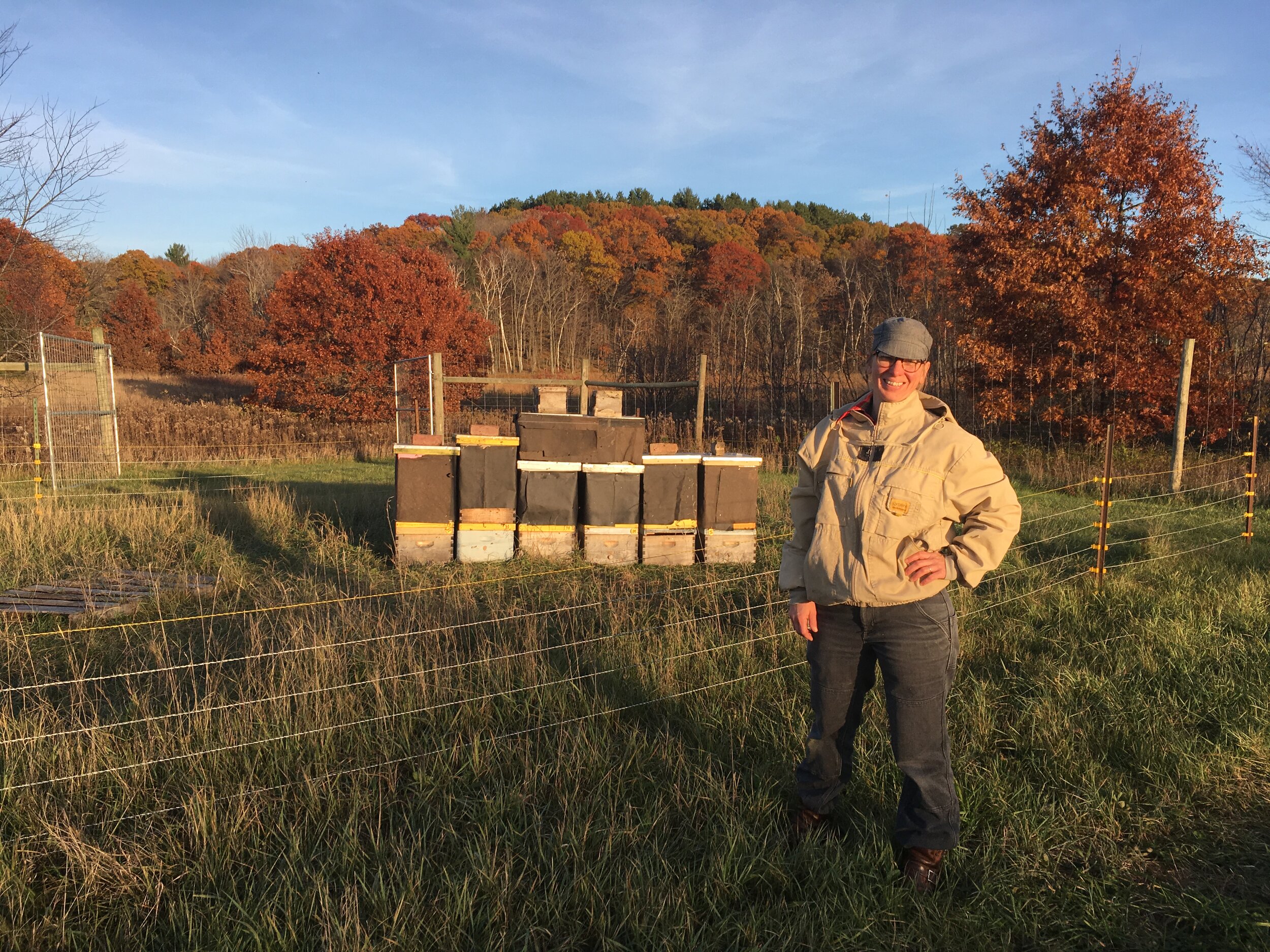What should I bee doing in October 2019?
Fall back, my sweet bees.
May you spring forward after the long, dark, flowerless night.
Well beeople, the weather is about to take a turn towards coldville. Today is forecasted to be the last day above 50, let alone 45 for awhile. Does that mean it won’t warm up again? Not necessarily. I remember keeping bees in a t-shirt on Thanksgiving one year at 60. Anything seems to be possible with the weather these days. And as beekeepers, we need to be very aware of this. I was talking to a farmer friend of mine yesterday and we agreed that the last 2 winters have been suggesting a loss of our shoulder seasons; spring and fall. We need these times of transition to adjust and so do animals. How does anything acclimate into our harsh winters or hot, wet summers without a gradual change? The unfortunate thing about the these vast temperature swings is if the weather is too cold this time of year and the bees are light on stores, it is harder for them to take it down and process it in time for winter. If it is too warm in the fall, they will eat through more of their stores because they are active and there is little forage.
WHAT ARE THE BEES DOING IN OCTOBER?
In the month of October, the bees are acutely aware of scarcity and winter prep. Most bees anyway. This is why we stopped keeping Italian honey bees that don’t get this cue. They can eat their winter stores too fast and run out of food before spring time. i have even seen them do it in the fall. Anyway, what your bees should be doing is slowing down and completely stopping brood production. There really is no food out in the landscape, unless they are robbing from other hives. There can be a little pollen. I have seen pollen coming in the hive as late as mid-October but it is not nearly the amount that would make them keep rearing brood. They are curing the last of the nectar or feed that is already in the hive and clustering at night when temps dip below 40degrees.
WHAT IS THE BEEKEEPER DOING IN OCTOBER?
This is a bitter sweet time for beekeepers. Time to say goodbye to your bees till spring. There is no reason to be pulling frames out and inspecting the inside of your hive in October, even if temps are above 50. They have worked really hard to seal everything up with propolis. If you do too much pulling apart, they will not have adequate time or heat to make that propolis seal work around all the drafty spots in the hive. If you did your best to keep them healthy in the summer and early fall, left them enough food/fed them to weight if they ate too much or got robbed out, and made sure they had a nice, productive queen, there is not much else to do except wrap them up. Yuuki likes to say “It is about what is inside the hive.” There are several materials and ways to wrap and insulate but what is most important is whether or not that hive is healthy and has a nice population relative to the size of the box you put them in.
But, I will share with you some things I have been doing to my hives starting yesterday to prepare for winter.
At this point, all feeder pails should be off the tops of the hives
Your hives should have 1 top hole and 1 bottom hole for ventilation. I use the small or medium space(either will be fine) on the entrance reducer for the bottom hole and then drill a small (1/2 inch hole in the top box above the handle for the top hole if you don’t have an inner cover with a hole).
Above the inner cover, but below the telescoping cover, I place 1 sheet of R5 insulation with a piece of duct tape to cover the spot where there is a hole in the inner cover so the bees don’t chew it. I wrap the whole hive in tar paper or a winter wrap (we sell these at the honey house insulation =$10 and wrap for $14).
Place a mouse guard over the bottom entrance. I use 1/2 inch hardware cloth because I have many hives. We sell really nice mouse guards at the honey house if you have no need for excess hardware cloth.
This year, I am moving all hives together for extra protection from the wind and to provide a little extra heat using the buddy system.
Hives will benefit from a northern wind break. I moved all the hives in front of this barn. You can use straw bales or something else just to keep the wind out.
I am also treating my hives with oxalic vapor. The late mite explosion and robbing this year makes me want to do a clean up of any mites that are on the bees bodies. Remember, even though those mites cannot multiply without brood, they can still injure the bees by sucking on the fat bodies, weakening those really crucial winter bees. Plus, I like knowing the hive will come through the winter with very few if any mites. Here is a great, detailed info sheet about Oxalic Vapor. It is not too late to do this. In fact, low temp for treatment is 37 and has no cap on the high temp.
Next month, I will include some information on emergency winter feeding if your hives are too light. Also, stay tuned for some winter classes at the honey house to keep your beekeeping mind fresh. Remember, this is a life long learning process with many rewards and many set backs but if you stick with it and keep trying, you will do nothing but improve your skills as a beekeeper and keep learning from these incredible animals.









